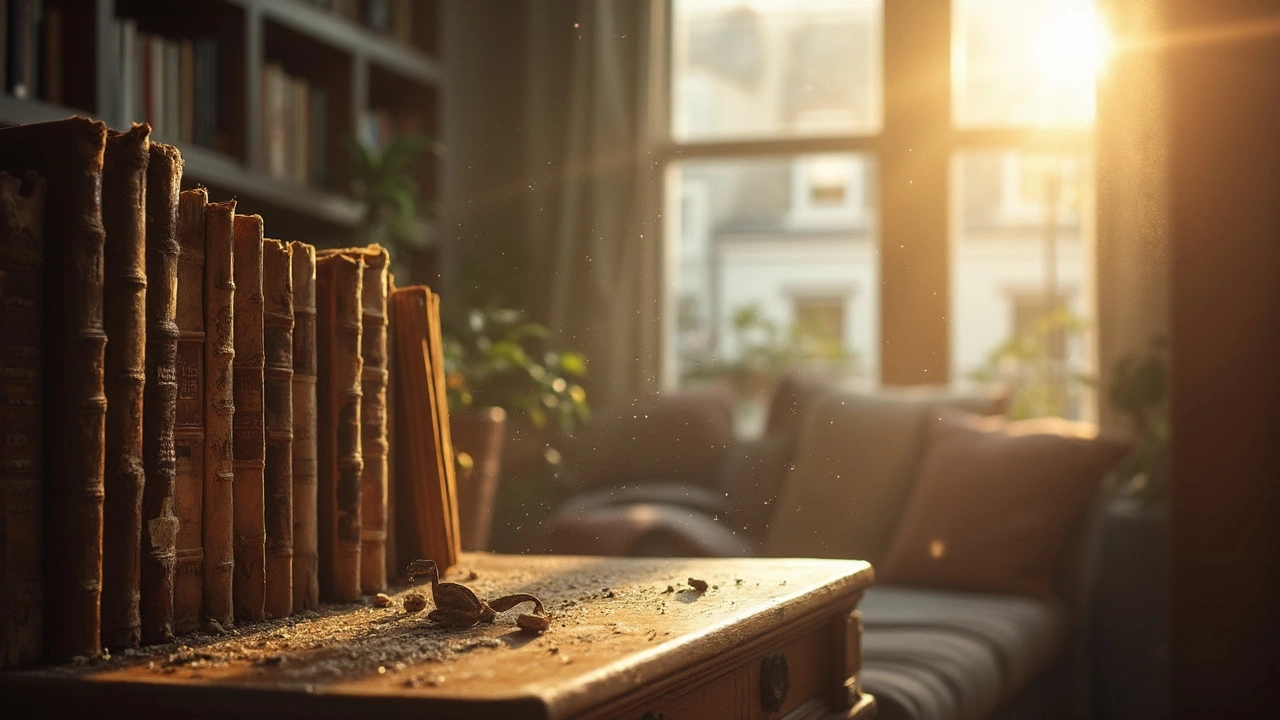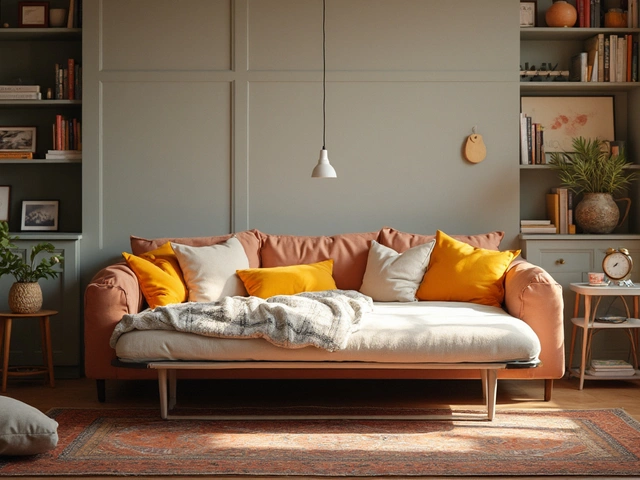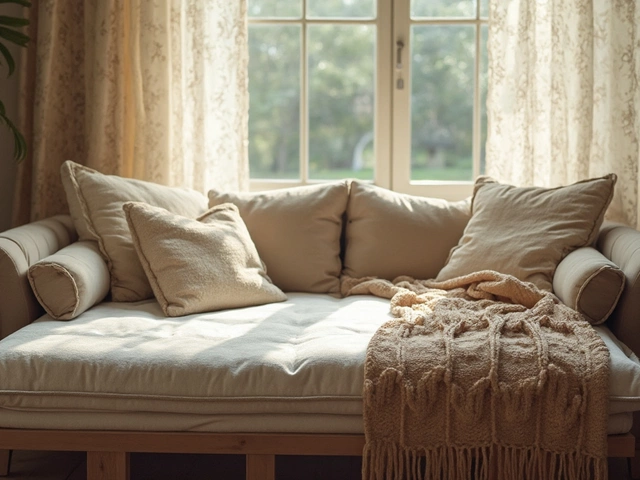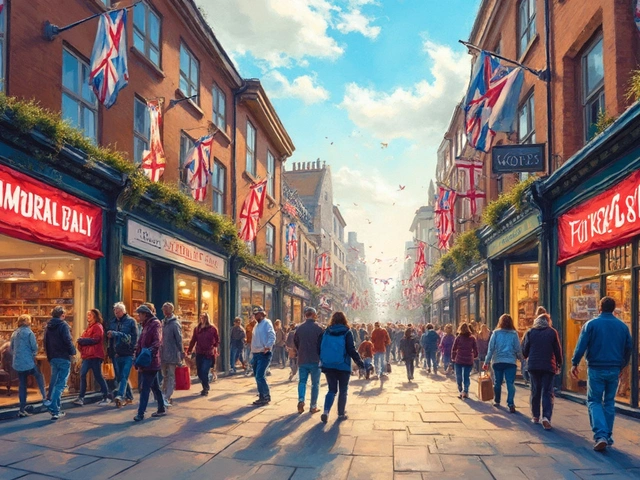You’d think you can just slap a bookshelf anywhere, right? Not quite. The wrong spot will leave your pages curling, your shelves wobbling, or worse—your whole setup coming down with a crash. Moisture, sunlight, and even where people walk every day can ruin your bookshelf plans fast.
Let’s get practical. Mold and warped paper go hand in hand with damp basements or steamy laundry rooms. If you want your books to last, keep your shelves away from anywhere that feels humid or gets hit with water leaks. Don’t trust how dry it ‘seems’—even slight dampness builds up trouble over time.
You’ll also want to look at how the sun hits your spot. Books covers fade quick when they’re sitting in direct sunlight, and the spines get brittle and cracked. If a window turns part of your living room into a tanning bed at certain hours, rethink the shelf. A little shade or a wall that stays cool can make all the difference.
- Avoiding Damp and Humid Spots
- Steering Clear of Direct Sunlight
- Staying Away from High-Traffic Areas
- Watching Out for Poorly Supported Walls
Avoiding Damp and Humid Spots
Putting a bookshelf in a damp spot is an easy way to ruin your favorite reads and waste your investment. Most folks don’t realize how quickly moisture messes up not just the books, but the shelves themselves—especially if they’re made of particle board or any kind of untreated wood.
If you place your bookcase in a basement that gets musty, or a corner near a bathroom or laundry area, you’re inviting mold and mildew. Here’s something worth knowing: According to the EPA, mold starts growing on surfaces within just 24-48 hours of getting wet and thrives when humidity is above 60%. That’s all it takes for warped covers, funky smells, and stained pages.
| Location | Humidity Risk Level | Typical Issue |
|---|---|---|
| Basement | High | Frequent condensation |
| Bathroom (outside shower) | Moderate to High | Steam, water spills |
| Laundry Room | High | Appliance leaks, steam |
| Near kitchen sink | Moderate | Splashes, humidity |
If you really want to use these areas, set up a small humidity gauge first. Those cheap digital ones you can find online let you see at a glance if things are pushing past the safe zone. Aim to keep the spot below 50% humidity—anything higher is a red flag.
Here are a few simple tips:
- Avoid putting bookcases against exterior walls in old homes—they get colder and attract moisture.
- Don’t push shelves flush up against the wall; leave a little gap so air can move around the back of the case.
- Pick up dehumidifiers for basements or laundry spaces. It keeps the air crisp and books safe.
- If you spot any signs of water damage on your wall or floor, hold off until it’s professionally checked out.
No one wants to crack open a book and find it’s gone fuzzy or the pages feel like potato chips. Find a dry, steady spot for your shelves and you’ll never have those regrets.
Steering Clear of Direct Sunlight
Sunlight and bookshelves are a bad mix. You might love the warm look of a sun-kissed shelf, but your books feel differently. Direct sunlight eats away at colors and paper. Ever seen a cover that looks faded or washed out? That’s UV damage. This doesn’t just mess up the way your books look—it also makes the paper inside dry and brittle.
Publishers and librarians agree: keeping books out of direct sun is non-negotiable if you care about their condition. The National Library of Australia warns that “extended exposure to sunlight can permanently weaken and yellow paper.” Once that damage is done, you can’t fix it. Not even special cleaners or tricks will bring those pages back to normal.
Here’s what actually happens when your bookshelves sit in the sun:
- Book covers lose color pigment in as little as four months.
- Paper may get brittle, with pages tearing easily after a few summers by the window.
- Glue used in spines dries out, making books fall apart.
| Effect | Timeframe |
|---|---|
| Noticeable fading | 3-6 months |
| Brittle pages | 12 months |
| Weak glue/spines | 16-18 months |
If you have no choice but to put shelves near a window, try these quick fixes:
- Hang blackout curtains or UV-blocking blinds.
- Use UV-filter window film—it cuts out most damaging rays but still lets daylight in.
- Avoid putting rare or valuable books in the danger zone. Stick a plant or a lamp on the shelf to block direct beams.
Bottom line: if you don’t want to replace your favorite paperbacks every year, keep those shelves away from harsh sunlight. The shade is your friend.
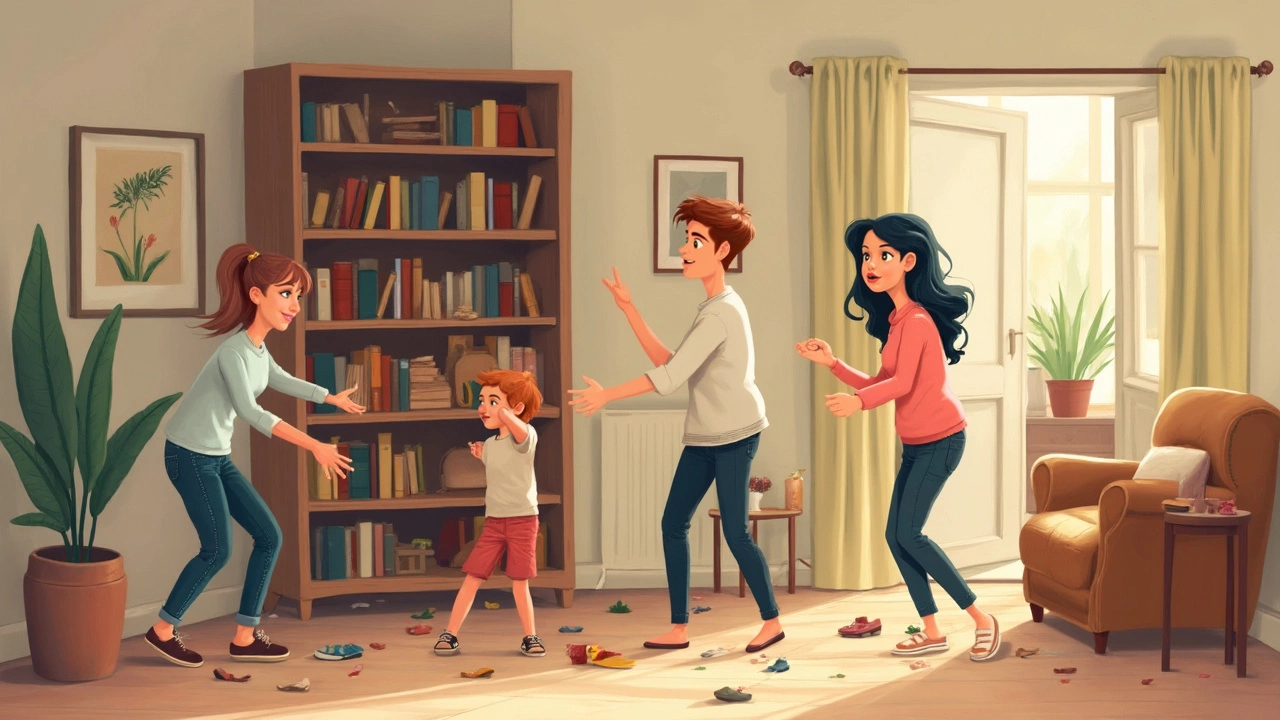
Staying Away from High-Traffic Areas
Ever noticed bookshelves shoved right by front doors, busy hallways, or at the bottom of staircases? It looks convenient at first, but it’s a recipe for problems. Constant foot traffic means your books, decor, and even the shelf itself are all targets for bumps, knocks, and daily wear.
If you have pets, kids, or just a lot of people coming and going, that risk goes up quickly. For example, one insurance survey in 2023 found that home accidents involving tipping furniture more than doubled in busy entryways compared to quiet rooms. Tripping over a corner or knocking a book off can do more damage than you’d expect—especially if someone falls or if you have heavy hardcovers up top.
Placing a bookshelf in a high-traffic spot also has a practical downside: dust, dirt, and even water from rainy shoes end up all over your shelves. Who wants to wipe mud spots off their paperbacks every other week?
- Avoid sticking bookshelves next to doors that swing open wide, or in corridors less than 3 feet across.
- Steer clear of play areas or anywhere kids tend to chase each other.
- If you must use a hallway, anchor the bookshelf firmly to the wall and choose a low, shallow model to keep hazards down.
Here’s a quick look at how traffic zones stack up for bookshelf safety:
| Area | Risk Level | Common Issues |
|---|---|---|
| Entryway | High | Bumping, shelf tipping, tracked-in dirt |
| Hallway | Medium-High | Knocks, limited walking space |
| Living Room (corner) | Low | Minimal interruptions |
| Bedroom | Very Low | Safe for delicate items |
Your bookshelf will last longer and your books will stay in one piece if you keep them out of the action. Think about putting shelves in quiet nooks, corners, and personal workspaces instead. It might take a few extra steps to grab your favorite read, but it beats having to replace a whole row knocked off by accident.
Watching Out for Poorly Supported Walls
This might sound obvious, but a lot of people trust their walls more than they should. Not every wall can handle the weight of a loaded bookshelf. Especially in older homes or newer apartments with thin drywall, mounting a heavy shelf or leaning a tall unit can lead to sagging, cracking, or even a mini disaster if things tip over.
Let’s be clear: books are heavy. The average hardcover weighs around 1.5 pounds. Fill a 6-foot shelf, and you’re quickly pushing over 70 pounds or more, not even counting the weight of the bookshelves themselves. Drywall isn’t designed to hold that kind of load by itself.
Don’t guess—check how your wall is built before you place or mount a bookcase. Here’s a simple rule: always find the studs (those solid wood beams inside most walls). A shelf anchored into a stud can handle more weight and stay solid over time. If you use just plastic wall anchors in drywall, you risk everything coming loose, especially if kids or pets are around.
- Knock along the wall and listen for a solid sound—that’s likely a stud. Hollow-sounding spots are just drywall.
- Use a basic stud finder, which costs less than a single hardcover book.
- If you’re in a concrete or brick building, special masonry anchors are required. Regular screws just won’t cut it.
Here’s a quick overview of common wall types and the average weight they can support safely, based on a 2023 industry guide:
| Wall Type | Maximum Safe Load (Per Anchor, lbs) |
|---|---|
| Drywall only | 10-15 |
| Drywall (stud anchored) | 50-100 |
| Brick/Concrete (masonry anchors) | 100+ |
If you rent, drilling might not be an option. Stick to floor-standing bookshelves and avoid overloading the top shelves so the whole unit won’t tip. When in doubt, spread your books out or look for wall-safe shelving systems with clear instructions and certified weight limits. There’s nothing worse than coming home to books all over the floor.
